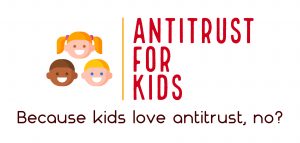
Authors: Steven Cernak and Luis Blanquez
Hard times for the Federal Trade Commission (“FTC”) and Department of Justice (“DOJ”). In the last few weeks, the Biden Administration has suffered three significant antitrust loses. This is the result of the Government’s determination to try to block mergers that, despite their size, were found by courts to not hinder competition.
Below is a short summary of the three merger cases with some final remarks on what to expect from the Government moving forward.
Illumina/Grail
In March 2021 the FTC filed an administrative complaint to block Illumina’s $7.1 billion proposed acquisition of Grail. Grail is a maker of a non-invasive early detection (MCED) test to screen multiple types of cancer using DNA sequencing, known as next generation sequencing or NGS.
In its complaint, the FTC alleged that the proposed transaction would substantially lessen competition in the U.S. MCED test market by reducing innovation and potentially increasing prices and diminishing the choice and quality of MCED tests. According to the FTC, Illumina, as the dominant provider of NGS––an essential input for the development and commercialization of MCED tests in the United States––would have the ability to foreclose or disadvantage Grail’s rivals while having at the same time the incentive to also disadvantage or foreclose firms that pose a significant competitive threat.
In September 2022, Chief Administrative Law Judge D. Michael Chappell dismissed the complaint in an unexpected decision ruling for the first time against the FTC in a merger case. In a nutshell, Judge Chappell concluded that the FTC failed to prove that Illumina’s post-acquisition ability and incentive to advantage Grail to the disadvantage of Grail’s alleged rivals would likely result in a substantial lessening of competition in the relevant market for the research, development, and commercialization of MCED tests.” On September 2, the FTC Complaint Counsel filed a Notice of Appeal.
Of interest is the fact that shortly after Judge’s Chappell ruling, in parallel the European Commission decided to block the acquisition under the EU Merger Regulation using similar antitrust arguments as the FTC. And that was despite the fact that the transaction did not initially trigger EU merger control thresholds and that the parties closed the acquisition during the investigation. The stakes are also high on that side of the Atlantic.
UnitedHealth/Change Highlights
In February 2022, the DOJ, together with Attorneys General in Minnesota and New York, filed a complaint to stop UnitedHealth Group Incorporated (UHG) from acquiring Change Healthcare Inc. According to the complaint the proposed $13 billion transaction would harm competition in commercial health insurance markets, as well as in the market for a vital technology used by health insurers to process health insurance claims and reduce health care costs.
In the complaint the Government argued that the proposed acquisition was (i) an illegal horizontal merger because it would create a monopoly in the sale of first-pass claims editing solutions in the U.S., (ii) an illegal vertical merger because UHG’s control over a key input—Change’s EDI clearinghouse—would give it the ability and incentive to use rivals’ CSI for its own benefit, which in turn would lessen competition in the markets for national accounts and large group commercial health insurance; and (iii) an illegal vertical merger because United’s control over Change’s EDI clearinghouse would give it the ability and incentive to withhold innovations and raise rivals’ costs to compete in those same markets for national accounts and large group plans.
In its press release, the DOJ also stated that the proposed transaction would give United access to a vast amount of its rival health insurers’ competitively sensitive information. Post-acquisition, United would be able to use its rivals’ information to gain an unfair advantage and harm competition in health insurance markets. The proposed transaction also would eliminate United’s only major rival for first-pass claims editing technology — a critical product used to efficiently process health insurance claims and save health insurers billions of dollars each year — and give United a monopoly share in the market. It further claimed that the proposed acquisition would eliminate an independent and innovative firm, Change, that today supports a variety of participants in the health care ecosystem, including United’s major health insurance competitors, with vital software and services.
To tackle DOJ’s three theories of harm, UHG agreed to divest Change’s claims editing business, ClaimsXten, to TPG upon consummation of the proposed acquisition. The divestiture package included all four of Change’s current claims-editing products. In May 2022, UHG also issued its “UnitedHealth Group Firewall Policy for Optum Insight and Change Healthcare,” addressing the sharing of customers’ competitively sensitive information (CSI) following the transaction.
In September 2022, U.S. District Judge Carl J. Nichols, after a two-week trial concluded that the Government was not able to meet its burden of proving that the transaction would substantially lessen competition in the relevant markets, which allowed the deal to move forward.
First, on the horizontal theory of harm, Judge Nichols determined that UnitedHealth’s proposal to divest ClaimsXten to TPG, allowed TPG to adequately preserve the level of competition that existed previously in the market for claims-editing software. In other words, the DOJ failed to show that the proposed merger was likely to substantially lessen competition in the market for first-pass claims-editing solutions in the U.S. Thus, the Court required UHG to divest ClaimsXten to TPG as proposed.
Continue reading →
 The Antitrust Attorney Blog
The Antitrust Attorney Blog











